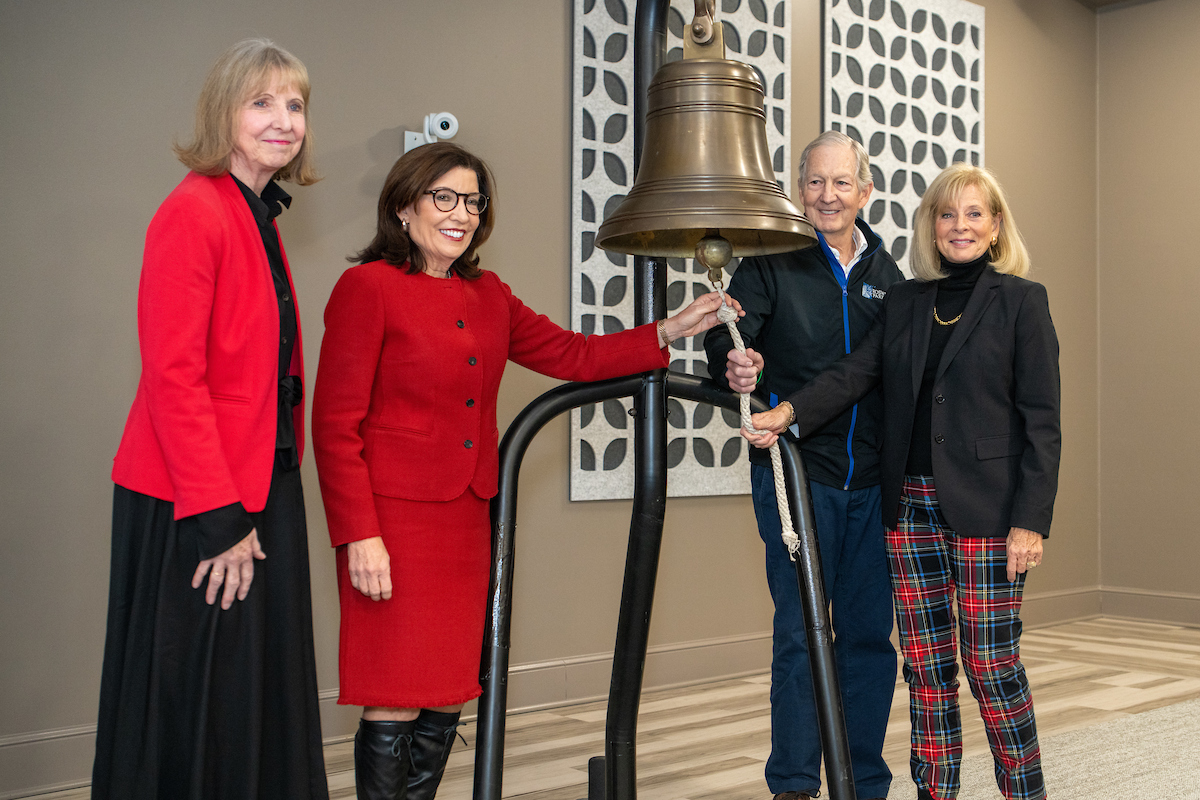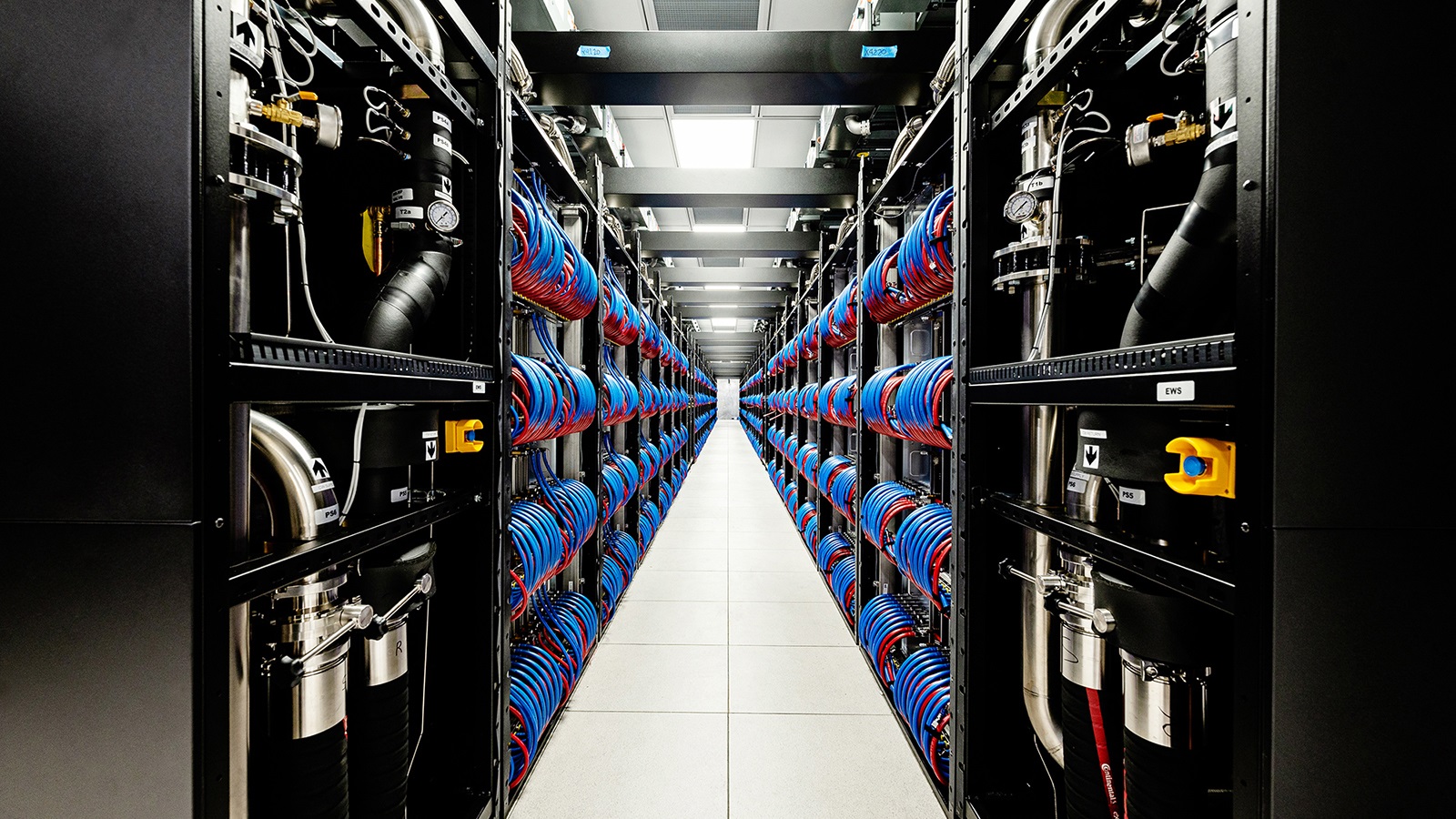To bring together the country’s brightest minds to think critically about the climate challenges facing the nation and the key capabilities of our laboratories, universities and companies to solve them, the U.S. Department of Energy’s (DOE) Argonne National Laboratory convened a virtual climate conference on April 14 called “America Resilient.”
Featuring remarks by U.S. Secretary of Energy Jennifer Granholm, DOE Deputy Director for Energy Justice Shalanda Baker and U.S. Representative Sean Casten, the conference strove to build a conversation centering on the needs for adaptation and resilience while focusing on topics ranging from the technical aspects of climate modeling to ensuring environmental justice.
The conference showcased the science, data and tools available for creating resilient communities by elevating, broadening and bringing urgency to the national conversation around the need for communities, utilities and industries across the country to build resilience to the near- and long-term effects of climate change.
“Climate change is an urgent crisis, and even though we are putting ourselves on an irreversible path to a net-zero carbon economy by 2050, the emissions that we have already produced have created changes to our weather patterns that will be seen for years to come,” Granholm said. “These once-in-a-century storms are no longer going to be once-in-a-century, but they don’t have to be so damaging. We can tap America’s ingenuity — like that found at the national laboratories — to continue to deliver incredible breakthroughs to prove that we can adapt, we can grow more resilient and we can thrive.”
Finding ways to address the ongoing effects of climate change while shifting America’s resource mix represents more than just a scientific challenge, according to Casten. “Climate resilience is an investment opportunity. If we think of it as an investment rather than an expense, we’ll get there,” he said.
Panelists conveyed the importance of high-accuracy, high-resolution climate models that can project potential climate impacts at the regional and local level and laid out the actions needed to ensure that our most vulnerable communities have the science tools to adapt to and become resilient against climate change impacts.
“There’s been a ton of focus on the benefits of mitigation provided by clean energy, but the benefits of those energy sources are going to be felt predominately toward the second half of this century,” said Gary Geernaert, director of DOE’s Earth and Environmental Systems Sciences division in the Office of Biological and Environmental Research. “Adaptation is going to be critically important as well — while we need to aggressively continue our efforts to mitigate climate change, we need to also be working to adapt just as purposefully.”
According to Geernaert, climate modeling tools to examine resilience have been limited by four broad challenges: their limited resolution, which is currently being addressed by supercomputers; inadequate representation of many of the small- and large-scale processes that need to be incorporated into climate and Earth system models; integrating how the human component serves as a climate feedback and as a sector that is impacted by climate change; and reducing the uncertainties in these projections.
“We’re asking tougher and tougher questions,” said panelist Katherine Hayhoe, director of the Climate Science Center at Texas Tech University. “Policymakers need to be able to make decisions based on these projections.”
“There’s a lot of data and modeling capacity coming online for understanding what a changing climate is going to mean in terms of what’s going to happen to people, the environment and engineering, but we’re still trying to bring all of it together as an integrated system approach,” added panelist Luis Bettencourt, Pritzker director of the Mansueto Institute for Urban Innovation at the University of Chicago. “It’s clear that we need to have a conversation about how communities and scientists can work together to find solutions; there’s need and there’s opportunity, but we don’t know precisely what’s most important going forward.”
The ability to develop relationships between those “on the ground” and climate scientists in order to make data actionable will prove to be exceptionally important as climate models are further refined. “We want to use this emergency in climate change to think about solutions at a greater scale,” said panelist Georges Benjamin, executive director of the American Public Health Association. “It’s important to create data systems that connect to actions that policymakers are taking that then connect to solutions, such as infrastructure plans to promote climate equity and resilience.”
According to panelist and University of Washington Professor of Global Health Kristie Ebi, there is a difference between the types of data and predictions that climate scientists are interested in and the types that are of interest to city officials or urban planners. “We don’t need to just understand temperature and precipitation, we need to understand things like food insecurity,” she said. “It’s one thing to be able to predict a Category 5 hurricane, it’s another thing to know what the effects will be when it makes landfall.”
One additional consideration when thinking about resilience involves the importance of the natural environment. “If we built natural infrastructure into our definition of infrastructure for resilience purposes, we could have a more flexible view of our built infrastructure,” said Cameron (Cam) Davis, Chicago Metropolitan Water Reclamation District commissioner. “Nature helps bolster and buffer our hard assets from the results of climate change.”
Extreme scenarios predicted in climate models are happening more and more frequently, according to panelist George Crabtree, director of the Joint Center for Energy Storage Research at Argonne. “We’re seeing the beginning, this is starting to emerge, it’s going to get a lot worse,” he said. “This is the pattern we can expect.”
By having renewed conversations between climate modelers and those who would use those models to drive decisions or actions, the organizers of the conference hoped to integrate climate modeling more intimately with building climate resilience and adaptation.
Climate scientists may need to further adjust to and reflect community needs and data. “There’s a misalignment in how scientists communicate about risk and how policymakers need to hear about risk in order to take action,” said panelist Lucia Schmit, emergency planning coordinator for the city of Seattle.
Climate impacts are also being more keenly felt in areas that are already under-resourced or underprivileged. To remedy climate inequities, Argonne and its partners are committed to ensuring environmental justice through improved modeling.
“We really can’t talk about resilience without talking about race,” Baker said. “There are inequities that are baked into the energy system, and when you are trying to make your energy system more resilient, you need to make sure you’re not doing it in a way that’s going to further entrench these inequalities.”
“Many of the challenges to these communities come from stresses from climate — such as heat, cold, flooding — and so we need to listen to underrepresented communities in terms of the objectives we create,” Bettencourt added. “This is possible and necessary, and it requires science and engineering of the type that national laboratories can bring in and it requires a broader governmental approach as well.”
Some companies have also already begun to build climate impacts into their future projections. AT&T has begun work with Argonne to make their installations more resilient to climate impacts in the Southeastern United States. “Argonne’s climate data is allowing us to make decisions about where to plan cell sites, for instance, to make sure they are better insulated from potential flooding,” said AT&T senior technical architect Gavin Anderson.
“Different companies and organizations are in different places in their ‘resilience journeys,’ and they can all learn from each other,” said panelist and Argonne systems analyst Tom Wall. “Beginning to ask the big questions about adaptation and resilience and sharing best practices is what this conference is all about.”
The Joint Center for Energy Storage Research (JCESR), a DOE Energy Innovation Hub, is a major partnership that integrates researchers from many disciplines to overcome critical scientific and technical barriers and create new breakthrough energy storage technology. Led by the U.S. Department of Energy’s Argonne National Laboratory, partners include national leaders in science and engineering from academia, the private sector, and national laboratories. Their combined expertise spans the full range of the technology-development pipeline from basic research to prototype development to product engineering to market delivery.
Argonne National Laboratory seeks solutions to pressing national problems in science and technology. The nation’s first national laboratory, Argonne conducts leading-edge basic and applied scientific research in virtually every scientific discipline. Argonne researchers work closely with researchers from hundreds of companies, universities, and federal, state and municipal agencies to help them solve their specific problems, advance America’s scientific leadership and prepare the nation for a better future. With employees from more than 60 nations, Argonne is managed by UChicago Argonne, LLC for the U.S. Department of Energy’s Office of Science.
The U.S. Department of Energy’s Office of Science is the single largest supporter of basic research in the physical sciences in the United States and is working to address some of the most pressing challenges of our time. For more information, visit https://energy.gov/science.



